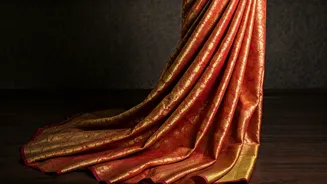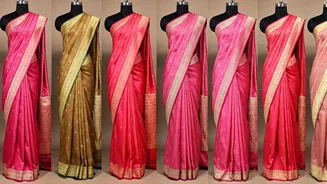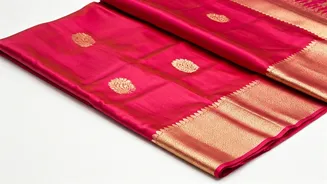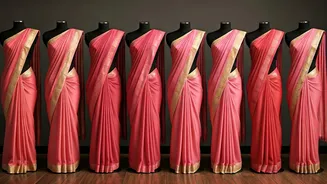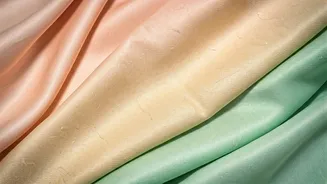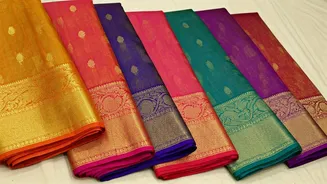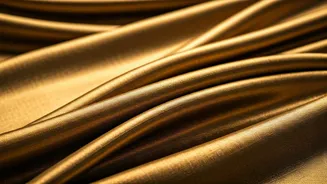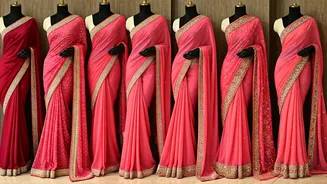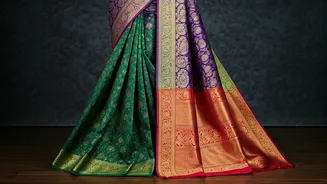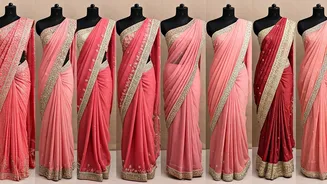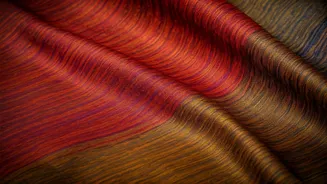Sarees: Cultural Significance
The saree is far more than mere clothing; it serves as a powerful symbol of Indian culture and identity. With a history spanning centuries, the saree has
evolved alongside Indian society, reflecting its rich tapestry of traditions, values, and artistic expression. Each region of India boasts its distinct saree styles, weaving techniques, and design motifs. These variations mirror the country's diverse landscape, religious beliefs, and artistic heritage. Sarees are worn for various occasions, from daily wear to festive celebrations and weddings. Each saree narrates a tale, preserving a legacy of craftsmanship and cultural pride, passed down through generations. These garments symbolize the enduring spirit of India's cultural heritage.
Fabric and Weaving
The beauty of a saree is intimately tied to the choice of fabric and the artistry of its weaving. Sarees are crafted from various materials, each with unique characteristics that contribute to the overall look and feel. Georgette, with its crinkled texture, drapes elegantly. Jacquard weaves create intricate patterns directly into the fabric, while chiffon offers a sheer and lightweight feel. Embroidery, particularly on chiffon sarees, adds an element of elaborate design. Silk sarees, renowned for their luxurious texture and sheen, showcase vibrant colours and detailed patterns. Cotton silk combinations provide a blend of comfort and elegance. The Patola weave, known for its complex designs, and the use of silk elevates the saree to a symbol of status and cultural significance. Each fabric type offers a distinct aesthetic and is selected for specific occasions and preferences.
Diverse Design Elements
The visual appeal of sarees lies in their diverse design elements. These elements contribute to the saree’s unique character and cultural relevance. Embroidered sarees feature detailed patterns created with various stitches and threads, adding textures and visual interest. Traditional motifs such as paisleys, floral patterns, and geometric designs are common. The colour palette plays a crucial role, with vibrant hues and subtle shades defining the saree's personality. Sarees may also feature embellishments like sequins, beads, and zari work (metallic threads), adding a touch of glamour. Border designs can be simple or elaborate, contributing to the overall aesthetic. These elements offer an extraordinary range of options to suit diverse tastes and occasions.
Styling and Versatility
Sarees are a testament to style and adaptability. The way a saree is draped can dramatically alter its appearance. The classic Nivi drape is widely popular, but variations like the Bengali, Gujarati, and Mumtaz styles offer unique looks. Sarees are incredibly versatile in their pairing with blouses and accessories. The blouse can range from simple designs to intricate embellishments, complementing the saree. Accessories like jewellery, including necklaces, earrings, and bangles, further enhance the outfit. Footwear, like heels or traditional sandals, completes the ensemble. Sarees can be worn for formal events or casual outings. The choice of saree, blouse, and accessories allows for endless styling options, reflecting personal taste and the occasion.
